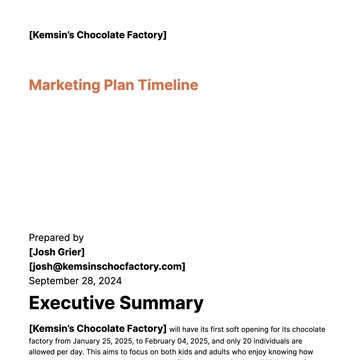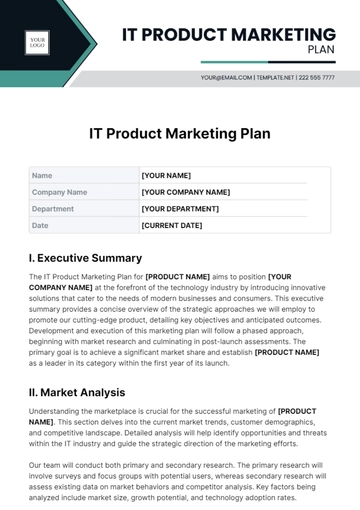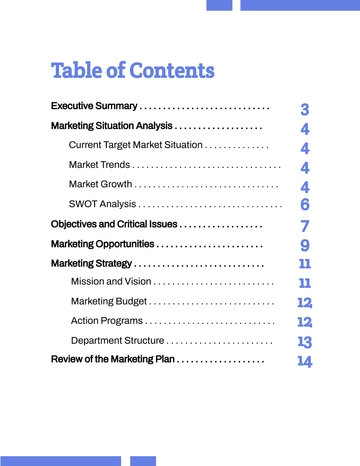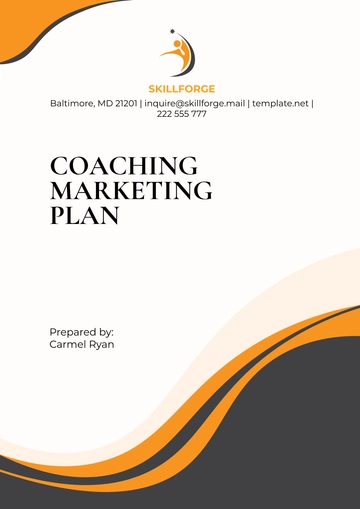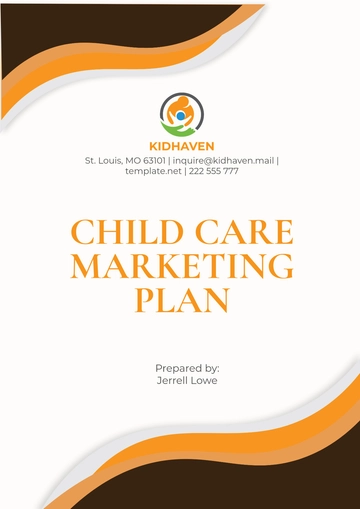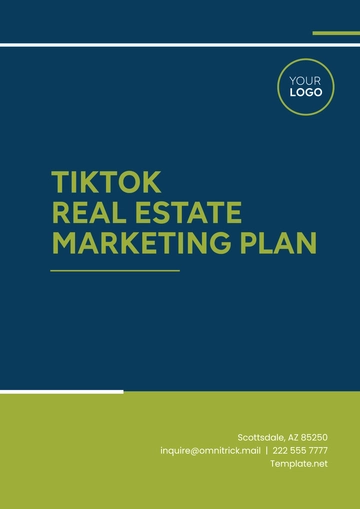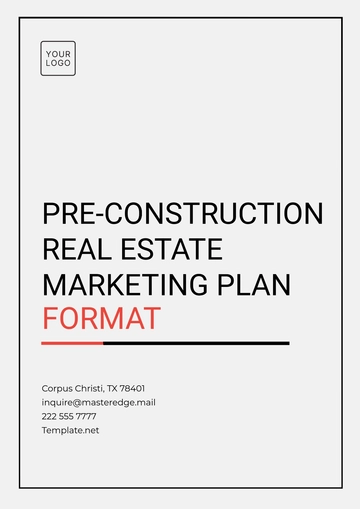Free Marketing Plan

Company: [YOUR COMPANY NAME]
Executive Summary
Our mission is to become the leading provider of eco-friendly home products by offering high-quality, sustainable solutions that enhance our customers' lives. Over the next year, our objectives are to increase brand awareness by 30%, boost online sales by 20%, and generate 1,000 new leads per month.
I. Market Research and Analysis
A. Market Overview
The market for eco-friendly products is expanding rapidly, driven by increasing environmental awareness and the demand for sustainable living solutions. The market size is projected to grow by 10% annually over the next five years.
B. Target Audience
Demographics
Environmentally conscious consumers aged 25-45, predominantly urban dwellers with middle to high income.
Psychographics
Values sustainability and is willing to invest in quality products that reduce their carbon footprint.
Buying Behavior
Prefers online shopping and is influenced by social media and peer recommendations.
C. SWOT Analysis
Strengths
High-quality products, strong supplier relationships, loyal customer base.
Weaknesses
Limited physical presence, higher price points.
Opportunities
Growing market, potential for new product lines, expanding to new regions.
Threats
Intense competition, changing regulations, economic downturns.
II. Marketing Objectives
Increase brand awareness by 30% within 12 months.
Boost online sales by 20% in the next quarter.
Generate 1,000 new qualified leads per month over the next six months.
III. Marketing Strategies
A. Product Strategy
Highlight features like sustainable materials, durability, and eco-friendly production.
Create a range of customizable, eco-friendly products tailored to each customer's preferences.
B. Price Strategy
Adopt strategies to maintain competitive pricing without compromising product or service quality.
Provide bulk purchase discounts and loyalty rewards for returning customers.
C. Place Strategy
Sell products on our e-commerce site and through chosen retail partners who share our brand values.
Explore partnerships with eco-friendly marketplaces to expand our market reach.
D. Promotion Strategy
Focus on digital marketing via social media, content strategies, and influencer partnerships to engage audiences.
Run email marketing campaigns and host webinars on sustainable living to engage and educate customers.
IV. Marketing Tactics
A. Social Media
Daily posts on Instagram and Facebook featuring product highlights, customer stories, and eco-friendly tips.
Monthly collaborations with influencers in the sustainability niche.
B. Email Marketing
Bi-weekly newsletters featuring new products, promotions, and sustainability tips.
Targeted promotional emails based on customer behavior and preferences.
C. Advertising
Launch Google AdWords campaigns targeting "eco-friendly home products" and "sustainable living" keywords.
Run Facebook and Instagram ads targeting our demographic.
V. Budget
Item | Monthly Budget |
|---|---|
Advertising | $10,000 |
Content Creation | $5,000 |
Tools and Software | $1,000 |
Personnel | $8,000 |
Events | $2,000 |
VI. Implementation Plan
Q1
Launch a new website with improved UX/UI.
Start content marketing with regular blog posts and eBooks.
Initiate social media campaigns on Instagram and Facebook.
Q2
Begin targeted email marketing campaigns.
Launch Google AdWords and social media ads.
Host the first webinar on sustainable living.
Q3
Analyze mid-year performance and adjust strategies as needed.
Boost content marketing through detailed guides and customer reviews.
Expand influencer collaborations.
Q4
Host additional webinars and participate in virtual trade shows.
Adjust the marketing budget according to past campaign performance.
Base next year's marketing plan on the annual performance review.
VII. Measurement and Evaluation
A. Measurement
Metric | Measurement Method |
|---|---|
Website Traffic | Track using Google Analytics. |
Conversion Rates | Monitor through the e-commerce platform. |
Sales Growth | Accounting department's monthly sales reports. |
Social Media Interaction | Analytics from social media platforms. |
B. Evaluation and Adjustment
Monthly Reviews
Assess performance against KPIs and adjust tactics as needed.
Customer Feedback
Regularly gather and analyze customer feedback to refine marketing strategies.
Quarterly Adjustments
Make larger strategic adjustments based on quarterly performance data.
Annual Review
Conduct a comprehensive review at the end of the year to inform next year's marketing plan.
By adhering to this structured and comprehensive marketing plan, we aim to achieve significant growth in brand awareness, online sales, and lead generation while effectively reaching and engaging our target audience.
- 100% Customizable, free editor
- Access 1 Million+ Templates, photo’s & graphics
- Download or share as a template
- Click and replace photos, graphics, text, backgrounds
- Resize, crop, AI write & more
- Access advanced editor
Introducing the ultimate Marketing Plan Template from Template.net! Crafted with precision, it's not just editable, it's fully customizable to suit your unique brand vision. Dive into effortless customization, whether through traditional editing or seamless manipulation in our AI Tool. Elevate your marketing strategy effortlessly with this essential resource.

